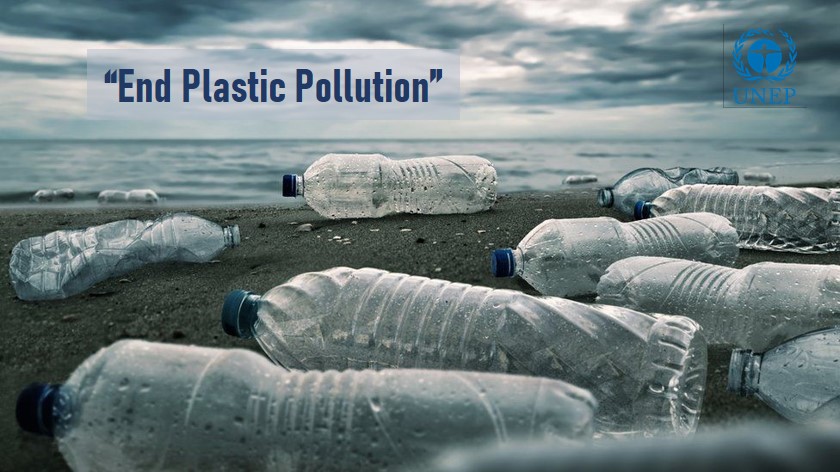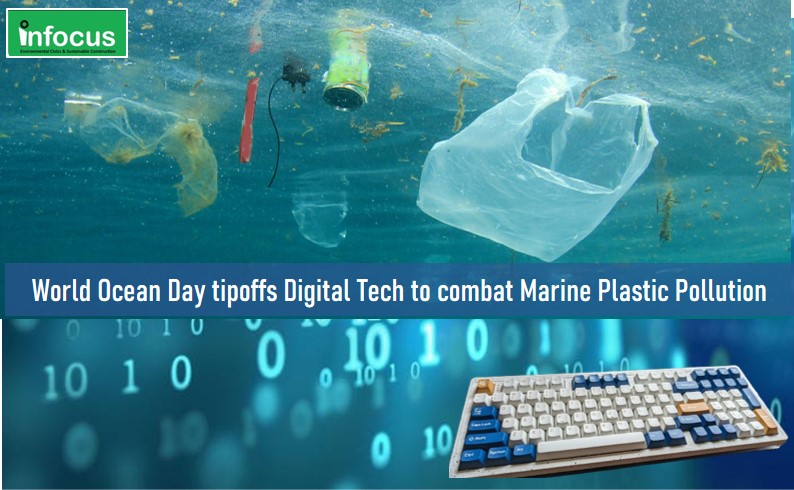Every year the 8th of June is marked as World Ocean Day. Marine plastic pollution in oceans is a critical environmental issue, with millions of tons of plastic waste entering marine ecosystems annually. This pollution not only threatens marine life but also disrupts human livelihoods and global ecosystems. However on World Ocean Day, digital tech emerges as a powerful tool in combating Marine Plastic Pollution, offering innovative solutions to monitor, prevent, and mitigate plastic pollution.
World Ocean Day 2024:
World Ocean Day highlights the urgent need to address concerns such as marine pollution, overfishing, habitat destruction, and climate change that threaten the health of oceans. The theme for 2024 World Oceans Day is “Awaken New Depth: catalyzing action for our ocean and climate”. People participate in World Ocean Day activities and take meaningful actions to protect the marine ecosystems as corporate social responsibility. Policy reforms are also underway around the world, as the ocean produces at least 50% of the planet’s oxygen, homes to most of earth’s biodiversity, and is the main source of protein for more than a billion people around the world.
However, digital solutions also emerge in recent times, as a potent tool in our arsenal against this crisis alongside policy reforms and corporate responsibility.
Monitoring Ocean Plastic Pollution:
One of the most significant ways digital technology aids in addressing ocean plastic pollution is through enhanced monitoring. Traditional methods of tracking pollution involve labor-intensive processes and limited scope. However, advancements in satellite imagery, drones, and remote sensing technologies have revolutionized this field. For instance, satellites equipped with high-resolution cameras can capture images of vast ocean areas, allowing researchers to detect and measure plastic concentrations. This data is crucial for understanding pollution patterns and identifying hotspots.

Moreover, drones are increasingly used to conduct detailed surveys of coastal areas and river mouths, where much of the plastic waste enters the ocean. Equipped with advanced sensors and artificial intelligence (AI), drones can identify and classify different types of plastics, providing valuable data for targeted cleanup efforts. These technologies make monitoring more efficient and comprehensive, enabling quicker responses to emerging pollution threats.
Preventing Plastic Pollution:
Digital technology also plays a pivotal role in preventing plastic pollution at its source. One effective strategy involves the use of Internet of Things (IoT) devices and smart waste management systems. IoT-enabled sensors in waste bins can monitor fill levels and optimize collection schedules, reducing the likelihood of overflow and subsequent littering. Additionally, smart recycling systems use AI to sort plastics more accurately, increasing recycling rates and reducing the amount of waste that ends up in oceans.
Another preventive measure is the development of digital platforms that promote sustainable consumption and waste reduction. Apps and websites dedicated to plastic-free living offer consumers tips, product recommendations, and information on local recycling facilities. By raising awareness and providing practical tools, these platforms empower individuals to make environmentally friendly choices, ultimately reducing the demand for single-use plastics.
Mitigating Plastic Pollution:
Mitigation efforts are crucial for addressing the existing plastic pollution in oceans, and digital technology offers innovative solutions here as well. One promising development is the use of autonomous robots designed to clean up marine debris. These robots, often powered by AI and machine learning, can navigate through water bodies, identify plastic waste, and collect it for disposal or recycling. Some robots are designed to operate in harsh marine environments, making them highly effective in tackling pollution in remote and challenging areas.
Additionally, digital platforms facilitate global collaboration and data sharing, essential for coordinated mitigation efforts. For instance, the Global Plastic Action Partnership (GPAP) uses digital tools to connect governments, businesses, and NGOs, enabling them to share best practices, resources, and data. This collaborative approach ensures that mitigation strategies are more comprehensive and impactful.
Enhancing Research and Innovation:
Digital technology also accelerates research and innovation in combating plastic pollution. Big data analytics and AI are used to model the impact of plastic waste on marine ecosystems, helping scientists develop more effective solutions. Furthermore, digital platforms for crowdfunding and collaboration enable researchers to secure funding and partnerships for innovative projects aimed at reducing plastic pollution.
In a word, digital technology offers a multifaceted approach to combating plastic pollution in oceans. From monitoring and prevention to mitigation and research, these technologies provide powerful tools to tackle this pressing environmental challenge. By leveraging digital advancements, we can develop more effective strategies to protect our oceans and ensure a healthier, more sustainable future.
By
Editorial, Infocus


